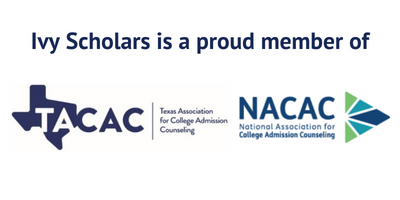Many international students apply to and attend American colleges, and there are many misconceptions and misunderstandings among those who are applying. Many students and their parents also have concerns about this process, and how colleges view international applicants.
This guide will answer common questions, and attempt to clarify and explain a process that often seems opaque. With the help of this guide, students and their parents can have confidence when applying to schools.

The majority of the world’s top colleges and universities are located in the US, and a great number of international students come to the US to study at these schools every year. American schools know this, and many are eager to welcome highly qualified students from around the world.
When doing research on schools you wish to apply to or attend, we recommend visiting and touring campus, either in-person or virtually. To gain a sense of what schools in America are like in terms of culture and atmosphere. This is recommended so students and parents know what they are getting into.
Important to be aware of at this stage is the timeline for the applications, as it differs in the US compared to most other countries. While deadlines do vary some, the first round of applications is generally due in early November, while the main round of applications is due at the beginning of January. These are hard deadlines, and late applications will not be accepted.
Most schools have specific guidelines and requirements for international students on their websites. This guide will provide a general overview of the application process, but each school has its own quirks, and their websites should be checked before completing their application.
The most important additional requirement for international students is proof of English proficiency. As all classes save for those on a foreign language are conducted in English, schools want to ensure all admitted students will be able to benefit from the instruction provided. Schools generally require students take the Test of English as a Foreign Language (TOEFL) or the International English Language Testing System (IELTS). The exact score required depends on the school, but higher scores are better.
Aside from English language testing, the requirements are the same as for American students. The one which requires the most arranging is standardized tests, which are required of international students, sometimes even when they are optional for American students. Each school differs on the exact requirements for testing, but most want the SAT or ACT completed alongside English proficiency exams. International Baccalaureate and British A-Levels are accepted by schools as examples of achievement, but do not fulfill testing requirements on their own.
For school transcripts, most schools require 3rd-party translation and verification of grades and academic preparation. The agencies most used and trusted are members of the National Association of Credential Evaluation Services (NACES) or the Association of International Credential Evaluators (AICE). This provides context for how difficult a student’s coursework was, how well they did in it, and how prepared they are for the rigors of college.
These are an increasingly important part of the admissions process, as schools look for accomplishments beyond academic preparation to differentiate students. This is true for international students as well, and high achievement in international academic competitions gives admissions officers another metric with which to judge a student’s academic preparation.
The main purpose of extracurriculars in an activities list is to display what students are passionate about and interested in. Thus, any list should display a student’s top achievements in a way that makes them seem unique and accomplished.
This is a requirement not put in place by the schools themselves, but by the American government. It requires even more forms to be filled out and requirements met. Once a student has been accepted by an American university, they will enroll the student in the Students and Exchange Visitors Information System (SEVIS). The student will then have to fill out an F (4 year school) or M (vocational school) visa application.
Students are required to visit an American embassy or consulate in their own country to fill out these forms, and to complete an interview with an employee there to determine their visa eligibility. This can be a lengthy process due to bureaucratic red-tape. Therefore, students should begin it early, and not wait until the last minute.

Many students believe that, so long as they are applying to the US, they must apply to Harvard and Yale. There are many schools with great programs that are neither famous nor well known, but which provide high quality education. Doing research and discussing which schools to apply to with a counselor can help students ensure that the schools they end up at are the right fit for them.

Ivy Scholars is the leading educational consultant in Sugar Land, Texas, providing admissions coaching, test prep, and more to help students enroll at top tier schools.

Call us now: +1 (281) 215-5148
.